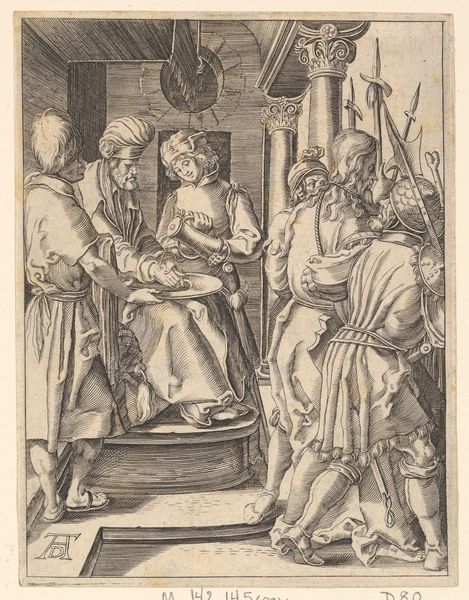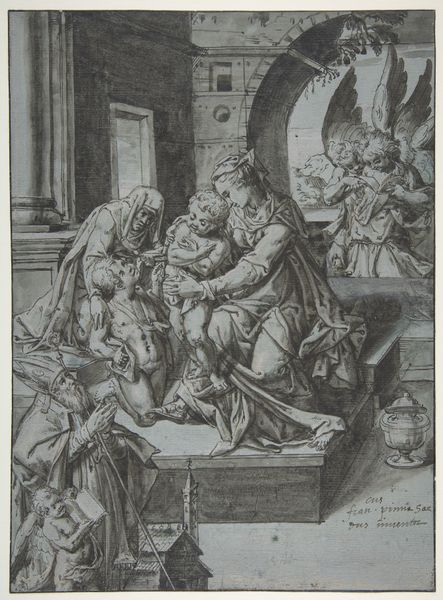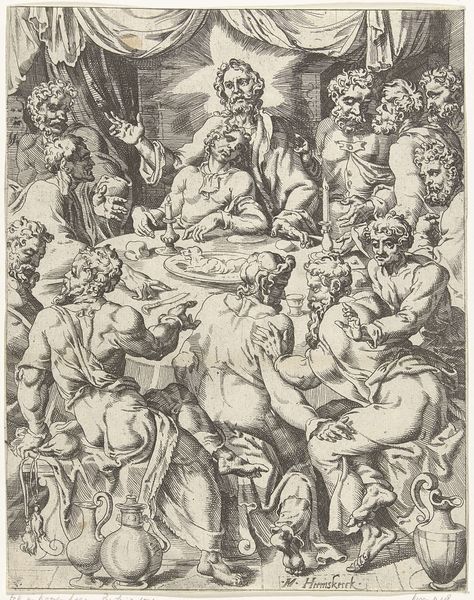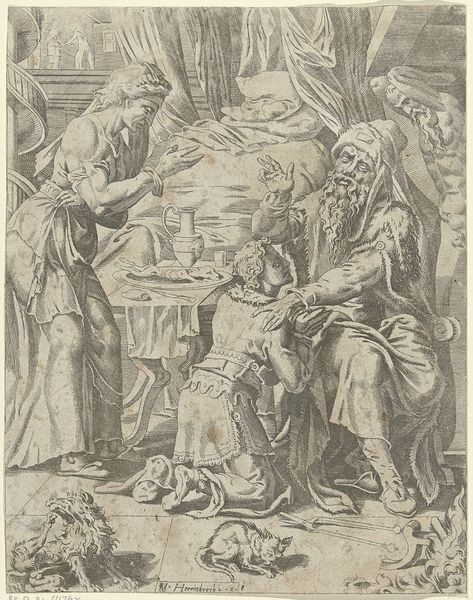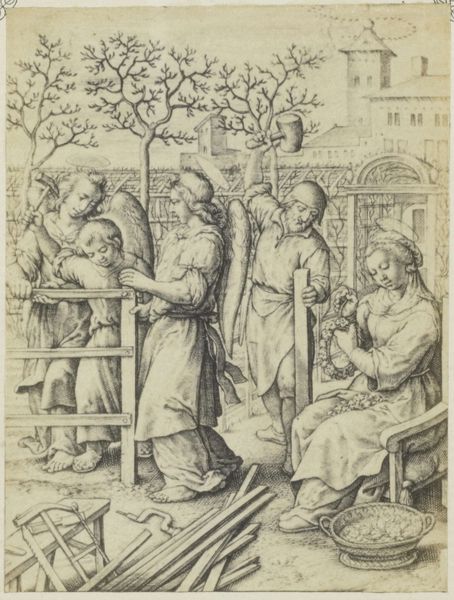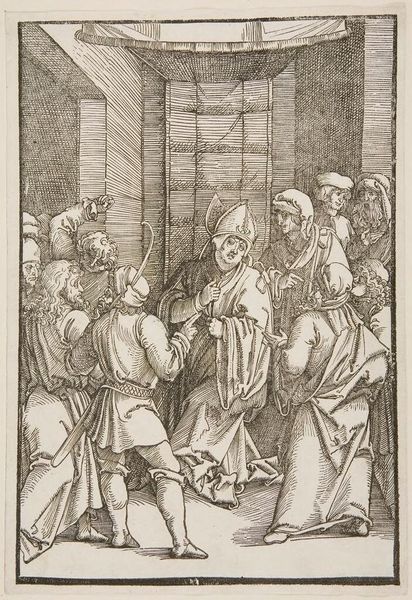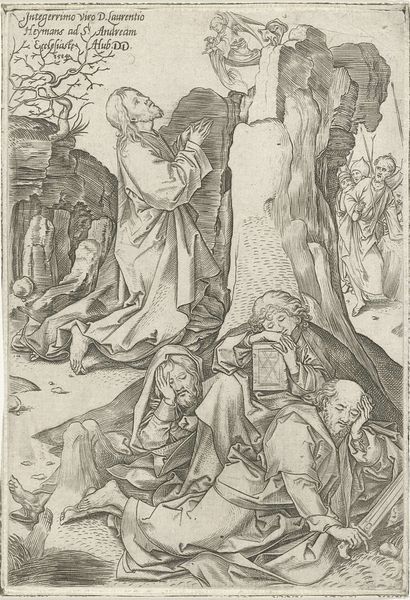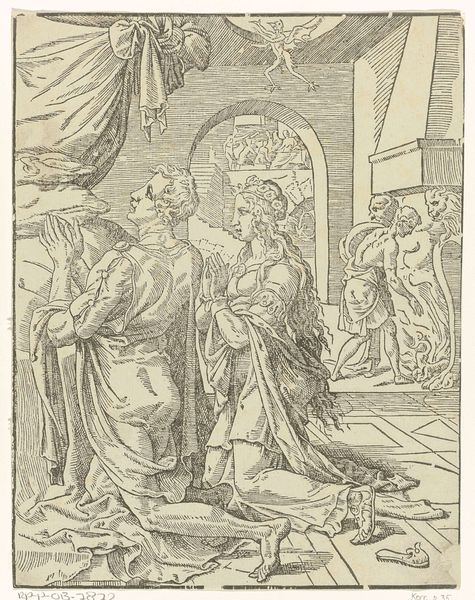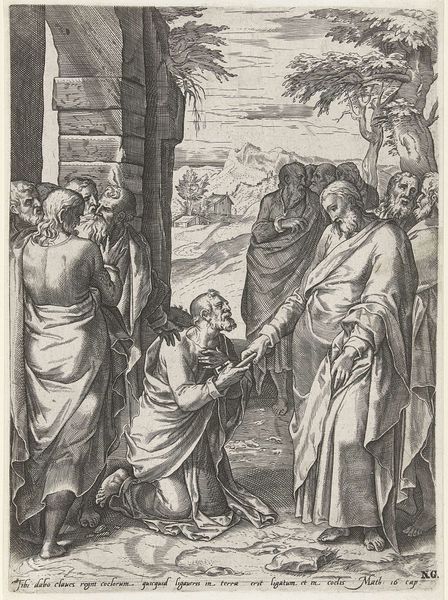
drawing, ink, pen
#
drawing
#
ink drawing
#
pen sketch
#
figuration
#
ink
#
pen work
#
pen
#
genre-painting
#
history-painting
#
italian-renaissance
Dimensions: height 336 mm, width 204 mm
Copyright: Rijks Museum: Open Domain
Curator: This is "Adoration of the Kings" by Pieter Coecke van Aelst. The piece, residing here at the Rijksmuseum, was crafted sometime between 1512 and 1600 using pen and ink. Editor: It feels very provisional, almost ephemeral, as though it's trying to capture a fading dream or memory. Look at those thin, rapidly drawn lines. Curator: Notice how the artist uses line weight to give form and volume. It really allows the figures to come alive, despite the apparent sketch-like quality. We see it most effectively in the drapery and the king's robes. The pen and ink medium itself speaks to a wider culture of drawing practice at this time – drawings like this were essential for workshop production, as they are means for visualising narrative before a painting is even begun. Editor: Absolutely, and it also reveals how central symbols become vessels of collective belief. Consider the kings: these figures were always associated with different parts of the world – each of them symbolically bringing the world itself to Christ, a notion of unity. Each offering also carries weight; gold for kingship, frankincense for divinity, and myrrh for mortality. Curator: Beyond the theological meaning, one might think about where van Aelst obtained the materials – what kind of pens and inks were accessible in the 16th century, what stationers provided these and at what cost, what did the preparation and execution of such sketches require in terms of labour? And these associations are important too for our appreciation of this historical sketch. Editor: And that perspective enriches our understanding. We aren't simply looking at a pretty picture; we're witnessing an expression of world view encoded within each figure, line, and symbolic object. Curator: Precisely, each stroke of the pen tells a story of making as well as conveying narrative. Considering how materials informed process provides so much context, doesn't it? Editor: Indeed! It pulls back the curtain and reveals so much intentionality behind even what looks like spontaneous artistry.
Comments
No comments
Be the first to comment and join the conversation on the ultimate creative platform.
